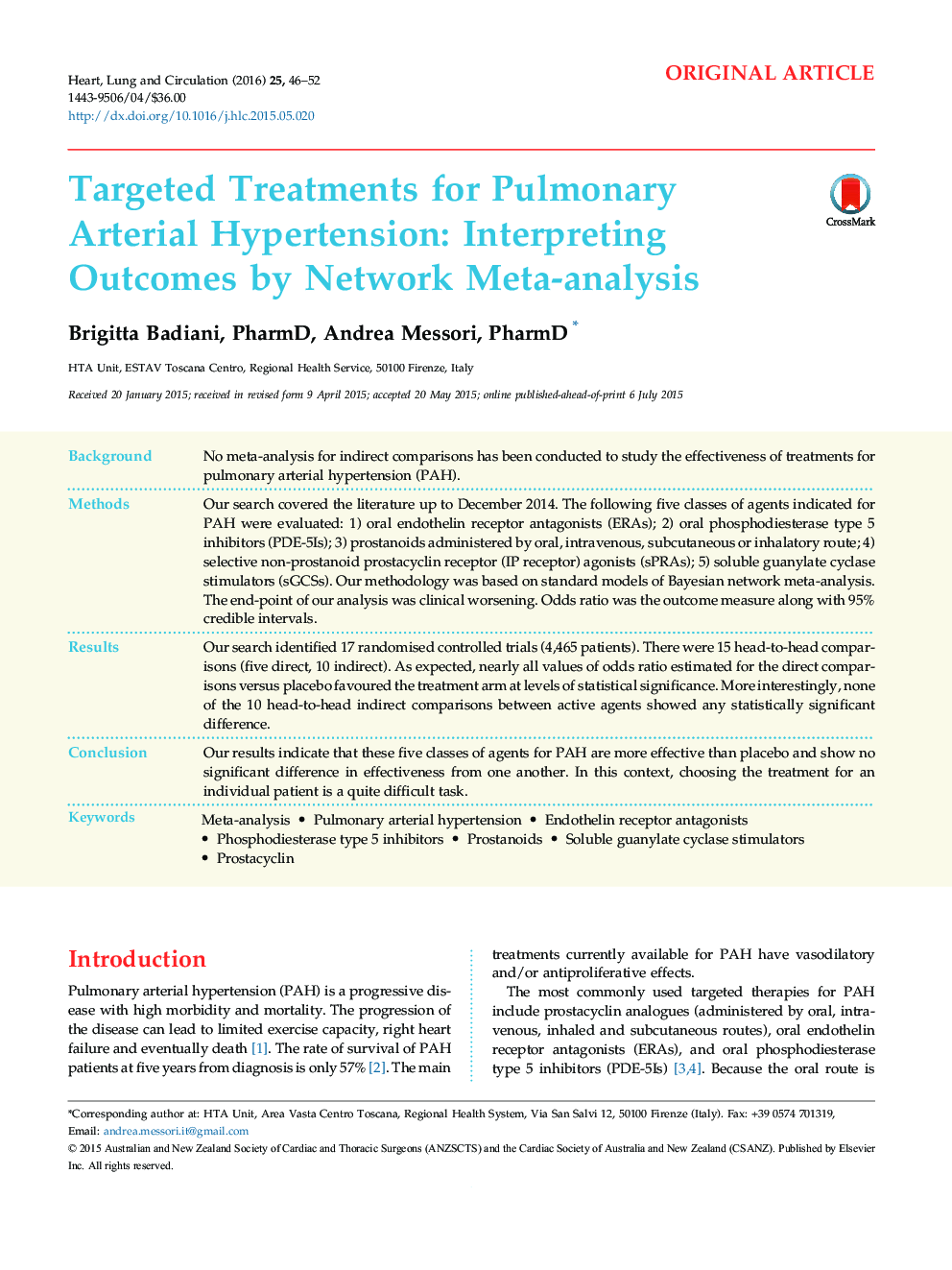| Article ID | Journal | Published Year | Pages | File Type |
|---|---|---|---|---|
| 5958982 | Heart, Lung and Circulation | 2016 | 7 Pages |
BackgroundNo meta-analysis for indirect comparisons has been conducted to study the effectiveness of treatments for pulmonary arterial hypertension (PAH).MethodsOur search covered the literature up to December 2014. The following five classes of agents indicated for PAH were evaluated: 1) oral endothelin receptor antagonists (ERAs); 2) oral phosphodiesterase type 5 inhibitors (PDE-5Is); 3) prostanoids administered by oral, intravenous, subcutaneous or inhalatory route; 4) selective non-prostanoid prostacyclin receptor (IP receptor) agonists (sPRAs); 5) soluble guanylate cyclase stimulators (sGCSs). Our methodology was based on standard models of Bayesian network meta-analysis. The end-point of our analysis was clinical worsening. Odds ratio was the outcome measure along with 95% credible intervals.ResultsOur search identified 17 randomised controlled trials (4,465 patients). There were 15 head-to-head comparisons (five direct, 10 indirect). As expected, nearly all values of odds ratio estimated for the direct comparisons versus placebo favoured the treatment arm at levels of statistical significance. More interestingly, none of the 10 head-to-head indirect comparisons between active agents showed any statistically significant difference.ConclusionOur results indicate that these five classes of agents for PAH are more effective than placebo and show no significant difference in effectiveness from one another. In this context, choosing the treatment for an individual patient is a quite difficult task.
